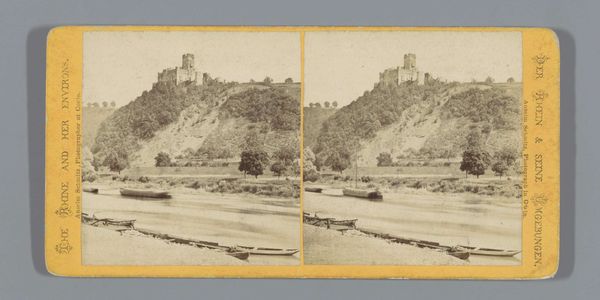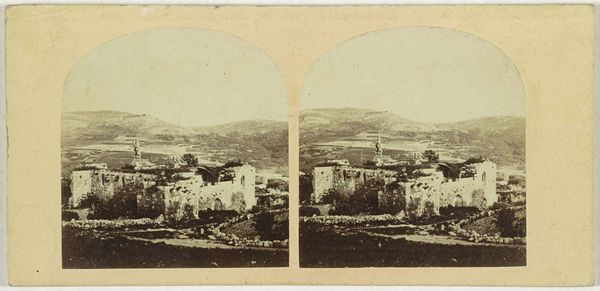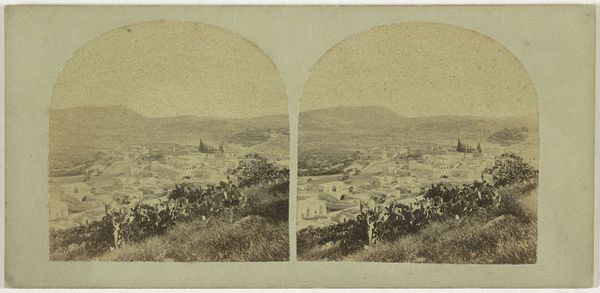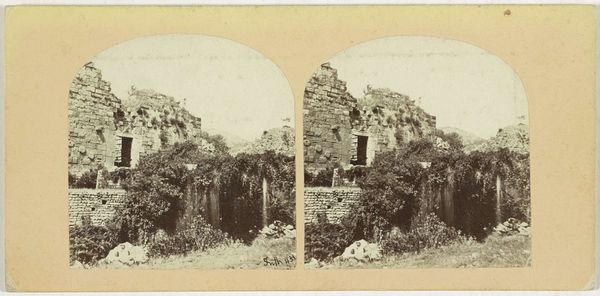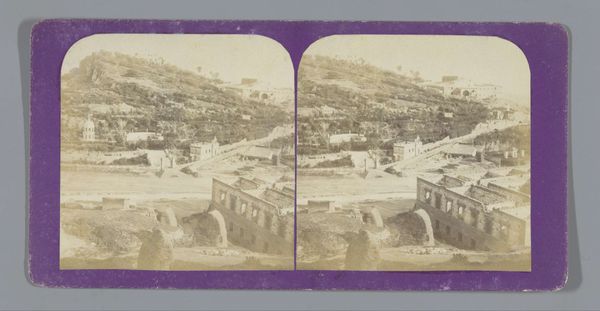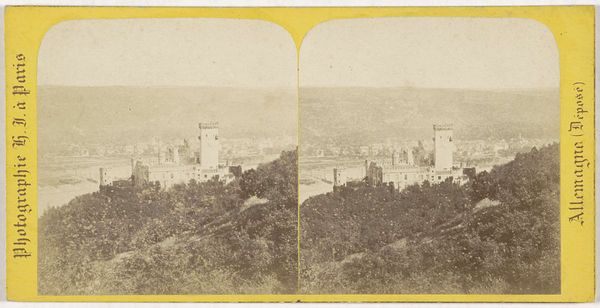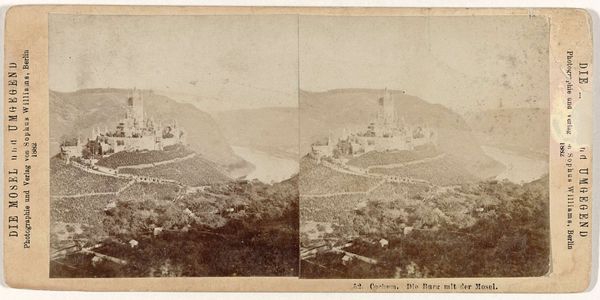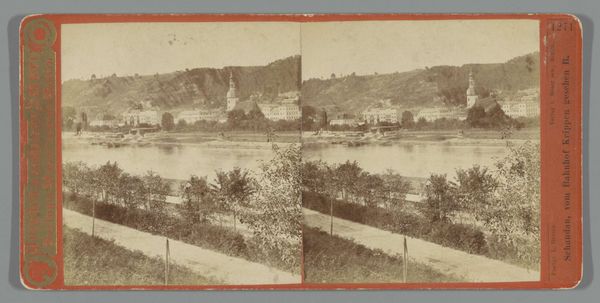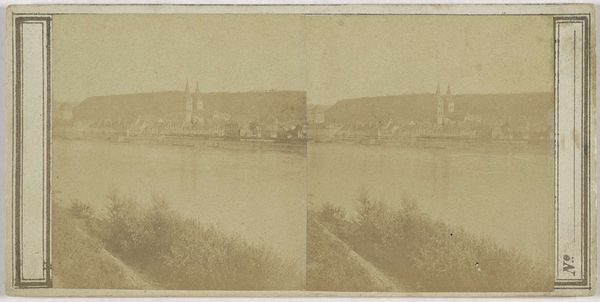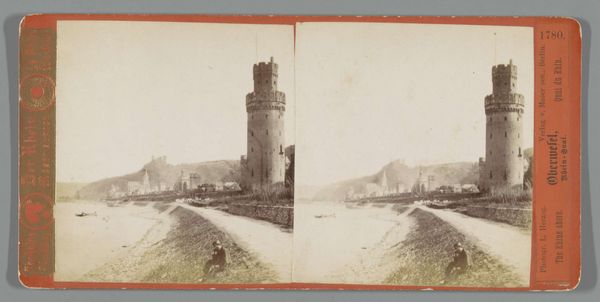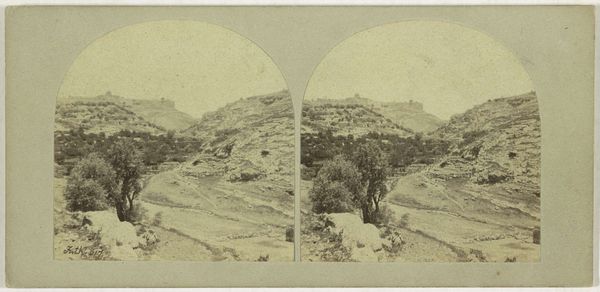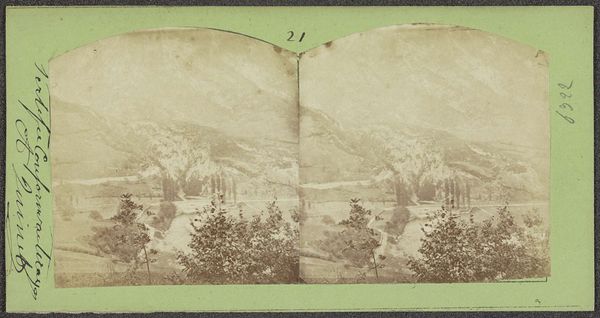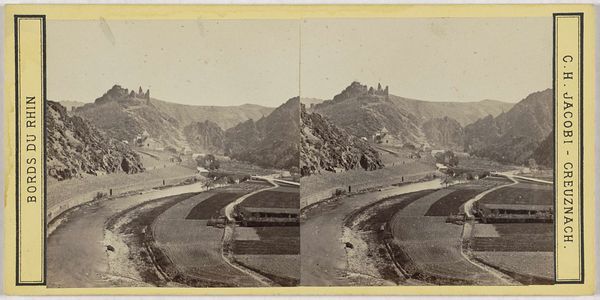
photography
#
landscape
#
photography
#
realism
Dimensions: height 86 mm, width 175 mm
Copyright: Rijks Museum: Open Domain
Curator: The subdued palette casts such a melancholy shadow, doesn’t it? A lonely tower dominates the foreground, but that's not all to the composition; another structure exists along the steep hill slope, almost forgotten! Editor: Indeed! What we see here is a stereo photograph titled "Muizentoren en burcht Ehrenfels nabij Bingen en Rüdesheim, Duitsland," attributed to A. Baumann, and estimated to have been created between 1861 and 1870. The stereo format itself is so interesting historically because it offers two slightly different perspectives, creating an illusion of depth when viewed through a stereoscope. It was an attempt to simulate reality at a time where photography was developing rapidly. Curator: Speaking of structure, look at how the tower in the foreground functions. Its verticality is strikingly echoed by the shape of the castle and tree line—it brings our vision skyward and encourages us to contrast it against its setting. It gives me such a sense of spatial orientation within the piece. Editor: It's important to think about the historical implications of a photo such as this: what we're observing is most likely how Germany visualized itself. How this picture became another instrument to cultivate patriotic identity at a key time of nationalist ferment is intriguing, specifically via these majestic representations of its natural and built environments. Curator: I am drawn back to the materiality of the photograph itself, it has an amazing physical and textural presence to it, despite being so fragile. Editor: Exactly, and if you contemplate that for nineteenth-century audiences, owning stereo cards was about experiencing virtual tourism from your parlor. How might such representational technologies, such as photography, have encouraged particular concepts of location, landscape, and history for its audience in such turbulent times? Curator: It definitely adds more depth when considering our interpretations! I found it initially subdued but seeing this piece in its moment unlocks a complex network of feelings in an interesting dialogue. Editor: Exactly! By situating a work such as this in a particular place, time, and cultural framework we hopefully make the viewers’ engagement that much richer and more relevant.
Comments
No comments
Be the first to comment and join the conversation on the ultimate creative platform.
